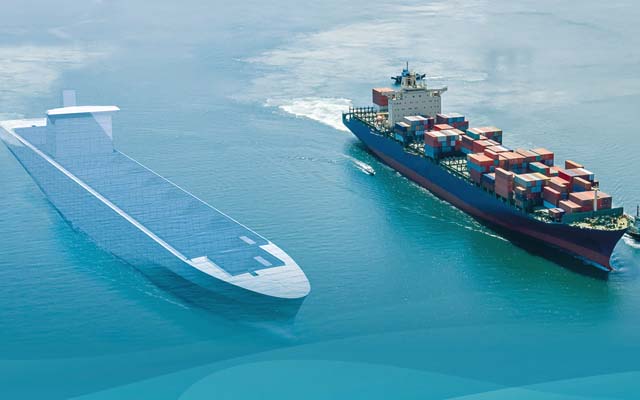Four new companies — Kawasaki Kisen Kaisha (‘K’ Line), Kyokuyo Shipyard Corporation, Mitsui E&S Shipbuilding and Sumitomo Heavy Industries Marine & Engineering — have joined the collaborative cross-industry Digital Twin Project.
This expansion marks phase three of the project, which aims to create a secure data-sharing framework between shipyards and shipowners to advance the use of digital twins throughout a ship’s lifecycle, contributing to improved operational efficiency and safety. The participants will engage in detailed discussions around the feasibility of increased data sharing between stakeholders, with the aim of tackling some of the hurdles around sharing sensitive design and operational data.
Through close collaboration between a diverse range of stakeholders, the project aims to develop a new platform to allow the 3D models created during the ship design stage to be shared in a secure, access-controlled digital environment. It can also allow operational data to be fed back to shipyards, providing invaluable insights. This could create a new revenue stream for shipyards and solution providers, as well as mechanisms to share benefits between stakeholders.
The digital twin project already includes several large shipowners and shipbuilders. The four new companies will join the original members, including shipowners Nippon Yusen Kabushiki Kaisha (NYK), NYK Group company MTI, Mitsui OSK Lines (MOL), Marubeni Corporation and Marubeni Group company MMSL Japan, shipbuilders Imabari Shipbuilding, Japan Marine United Corporation, and Usuki Shipyard, software and data services provider Napa, and classification society ClassNK.
Yoshimichi Sasaki, GM Digital Transformation Center, ClassNK, said: “We are delighted to welcome new participants to this major digital twin project. We now have people from across a diverse range of maritime business areas and roles offering their valuable perspectives. With ‘K’ Line, NYK/MTI, MOL, and Marubeni/MMSL Japan involved, we also have representation from many prominent Japanese shipowners, highlighting the significance of digital twin technology and the strength of the collaborative project.”
Naoki Mizutani, EVP Napa Studios, added: “These renowned new additions to the Digital Twin Project also mark a significant milestone for Napa Studios; the Project forms a prominent part of the Napa Studios initiative to bring together shipowners, charterers, shipyards, classification societies, financiers and insurers in joint projects. These efforts will provide more clarity on the practical implications of deploying new technologies or contracts and help develop the new technologies and operational frameworks needed for the transition to net-zero. We are grateful to all the participants for their engagement and look forward to the next collaborative developments.”
Akihiko Masutani, Director and Chief GM Business and Technical Division, Sumitomo Heavy Industries, said: “We take great pride in our company’s participation in such pioneering initiatives. Through this endeavour, we aspire to create innovation by integrating existing maritime technologies, such as wind propulsion, with cutting-edge ICT and digitalisation techniques, with the goal of making a meaningful contribution to the industry.”
When used effectively, digital twins are said to be able to offer insights into a ship’s unique design profile and characteristics to inform decarbonisation decisions. As a result, they can be a powerful tool supporting the shipping industry’s energy transition. With the high potential impact of this technology, as this project continues to evolve and gain momentum, the commercial launch is anticipated in 2025.
Image: Digital Twin Project (source: Napa)



